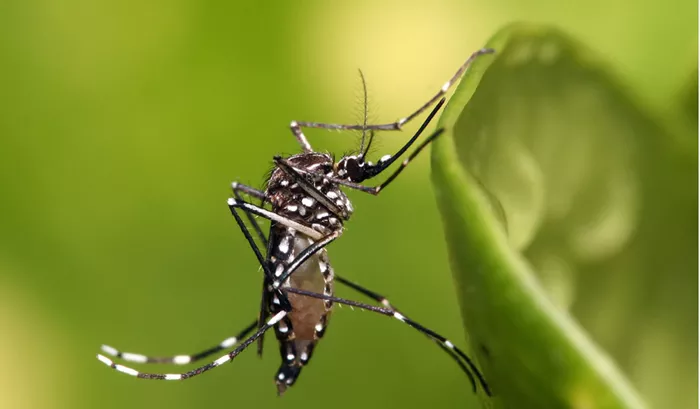Health authorities are raising alarms over the threat posed by mosquito-borne illnesses after three recent fatalities were reported in Wisconsin and Illinois due to West Nile virus. These tragic deaths underscore the ongoing risk these viruses pose, particularly to vulnerable populations.
The Wisconsin Department of Health Services (DHS) announced on Thursday that two individuals succumbed to the virus, with another case resulting in hospitalization. The affected individuals were from Outagamie, Fond du Lac, and Brown counties. Due to privacy concerns, the identities of the deceased have not been disclosed. On average, Wisconsin records around 18 cases of West Nile virus each year, according to DHS statistics.
In Illinois, health officials confirmed the state’s first death from West Nile virus this year. The victim, a Lake County resident in their 80s, began showing symptoms in mid-August and died shortly after. Illinois had previously recorded six deaths from the virus in 2023.
Dr. Sameer Vohra, director of the Illinois Department of Public Health, emphasized the gravity of the situation, stating, “This recent death, along with the six that occurred last year, highlights the serious risk posed by West Nile virus, especially to older adults and those with weakened immune systems.”
Understanding West Nile Virus
West Nile virus remains the leading cause of mosquito-borne disease in the continental United States, according to the Centers for Disease Control and Prevention (CDC). The CDC has reported 289 human cases of the virus in 2024 alone. The virus, first detected in the Western Hemisphere in 1999 in New York City, peaks during mosquito season, which runs from summer through fall.
The virus is primarily transmitted when mosquitoes feed on infected birds and subsequently bite humans and other animals. While many infected individuals may show no symptoms, about 20% experience fever, headaches, body aches, joint pain, diarrhea, vomiting, or a rash. Though most people recover, some may experience lingering weakness and fatigue.
Severe cases, about 1 in 150, can lead to encephalitis (inflammation of the brain) or meningitis (inflammation of the membranes surrounding the brain and spinal cord), both of which can be fatal.
To minimize the risk of infection, the CDC advises using insect repellent, wearing long-sleeved clothing, treating gear with insecticide, and taking steps to reduce mosquito populations, such as installing screens on windows and doors, using air conditioning, and eliminating standing water around the home.
Rise of Eastern Equine Encephalitis Virus (EEE)
Health officials are also cautioning against Eastern Equine Encephalitis virus (EEE), another mosquito-borne illness that has recently claimed a life in New Hampshire. The patient, who had severe central nervous system disease, succumbed to the virus, according to the New Hampshire Department of Health & Human Services (DHHS).
At least five states—Massachusetts, New Jersey, New Hampshire, Vermont, and Wisconsin—have reported cases of EEE. The CDC notes that the U.S. averages 11 human cases of EEE annually, with 196 cases reported between 2003 and 2023, resulting in 176 hospitalizations and 79 deaths.
In Massachusetts, ten communities have been classified as high or critical risk for EEE, prompting targeted mosquito spraying to protect residents. Like West Nile virus, EEE poses significant health risks, particularly if it leads to encephalitis. Approximately 30% of those with EEE-related encephalitis die, and many survivors suffer long-term neurological impairments.
Given the lack of vaccines or specific treatments for EEE, health officials emphasize prevention as the most effective defense against this deadly disease.


